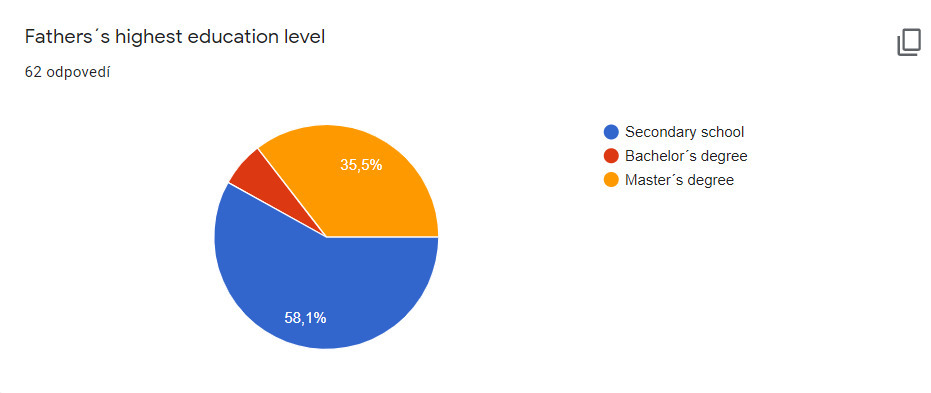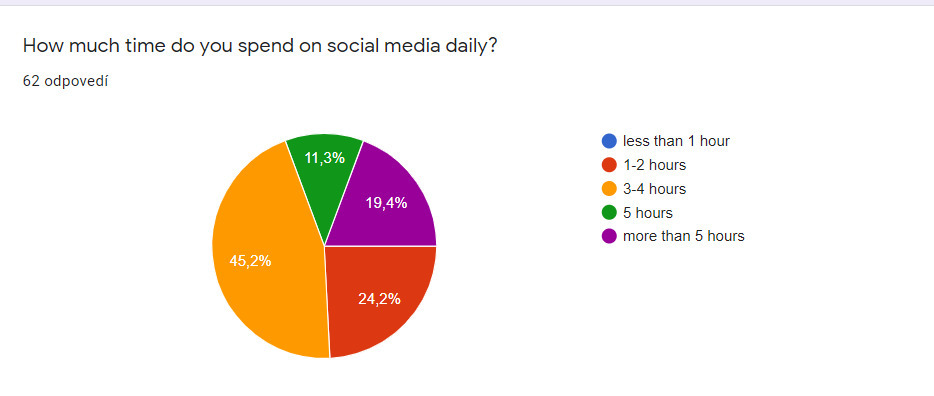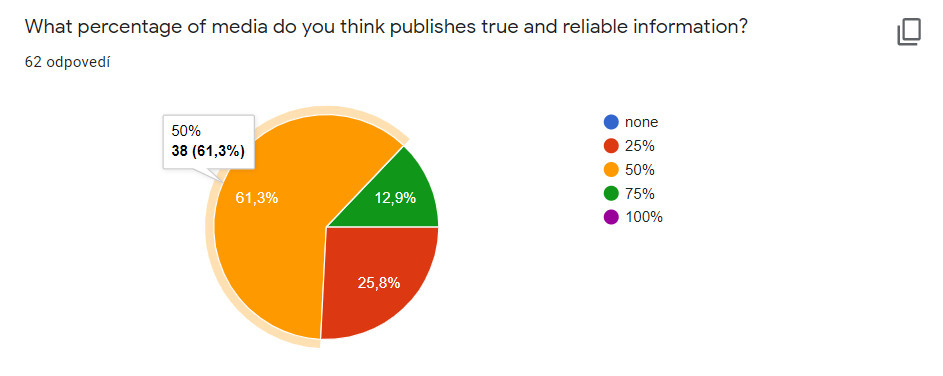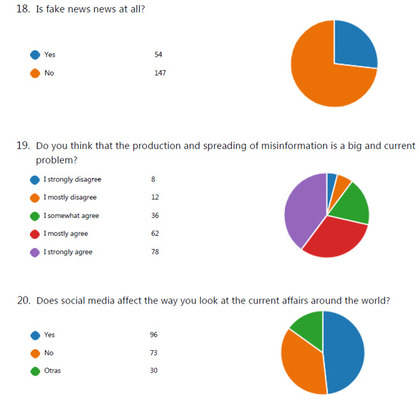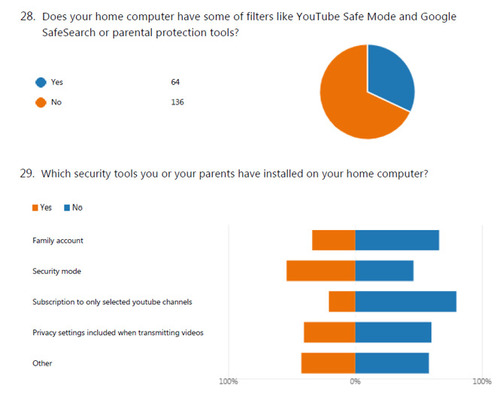Integrated literacy in action
- Integrated literacy in action
- The first information-organizational meeting
- Introduction of the teacher project members
- Introduction of the student project members
- Croatia X.gimnazija Ivan Supek
- Slovakia Gymnázium P.J.Šafárika
- Croatia - II. gimnazija, Split
- Spain- IES ERAS DE RENUEVA
- Presentations of the participating schools
- Project LOGO
- Online Meetings
- Explanantory videos
- Questionnaire results
- Christmas greetings
- Christmas traditions
- Media literacy - online international workshops
- Short-term exchanges of pupils in Zagreb
- Short-term exchanges of pupils in Split
- Short-term exchanges of pupils in Rožňava
- Short-term exchanges of pupils in Leon
- Short-term joint staff training events in Zagreb
- Short-term joint staff training events in Split
- Short-term joint staff training events in Rožňava
- Short-term joint staff training events in Leon
- Dissemination
- Lesson plans
- Pre-work activities
- Final outcome
Questionnaire results
CROATIA – X. gimnazija “Ivan Supek”, ZAGREB
We created the questionnaire in Google Forms and delivered it in electronic form to all students of our school and invited them to participate in the Media Literacy survey. The questionnaire was completed by 323 students, which represents more than 30% of students in the entire school.
The age of students ranges from 14 to 19 years, and the largest number of students who completed the questionnaire is 15 years (31%) and 16 years of age (30%). Of these, 73% were female students and 27% of male students which somewhat corresponds to the ratio of female and male students in the school population.

Data related to parental employment showed that 93% of mothers and 91% of fathers are employed.
The largest number of students, 44% of them, spend 3-4 hours on social networks, and 31% of them spend 5 or more hours, and 74% of them feel that social media deconcentrate them from doing homework, studying, etc..

As a source of information, students most often use social networks, friends then parents, and almost do not use the printed press and radio. Of the social networks, students mostly use Instagram and Snapchet, followed by tik-tok. Facebook and twitter are hardly used at all among the students of our school.
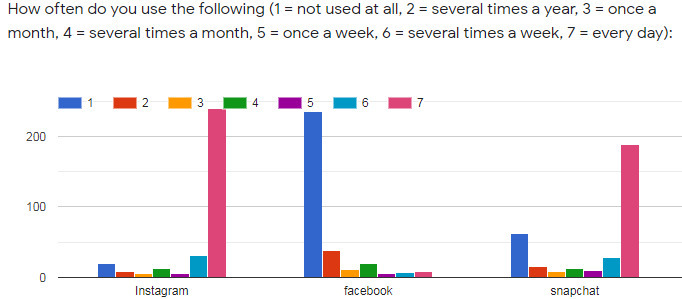
 87% of students believe that at least 50% of media publishes true and reliable information. 91% of students think about whether the information they share on social media is accurate.
87% of students believe that at least 50% of media publishes true and reliable information. 91% of students think about whether the information they share on social media is accurate.
84% of students believe that social media influences the way they look at current affairs around the world. Most students, 92% of them, agree that creating and disseminating misinformation is a big and current problem.
72% of students consider themselves as a fact-checker, and they generally fight against fake news by reading the entire text, not just attractive headlines, checking the date and time of publication, and checking the source and domain. They rarely check the imprint and the author, but over 90% of them say they think before sharing a post or information.
They consider it the most dangerous to publish misinformation in the field of Health care and Security issues.

42% of them think that the term fake news is an oxymoron, while 36% of students think that fake news is some kind of news after all. 92% of them think that article titles or images are misleading just to encourage them to click on it.
Internet security
When commenting on Internet safety, 75% of them talked about it with their parents and 53% thought it was a good preventative measure, and 23% of them would not want to talk about it with their parents.
They would like to talk about this topic at school with friends, first of all those who are the same gender (88%), then with school psychologist (35%), then with a female teacher (29%) and then with a male teacher. (22%).
79% do not have any protection on their home computers such as YouTube Safe Mode and Google SafeSearch or parental protection tools.

Sexting and sextortion
85% of students say they are familiar with the term sexting while most are unfamiliar with the term sextortion, and 34% are familiar with the term. 59% of respondents found themselves in a situation where they were exposed to inappropriate sexual content through social networks and applications. 26% of them had the opportunity to meet a person with whom he realized a romantic relationship through social networks and applications.
Here is what students state to what extent they are familiar with some behaviours in a virtual environment:

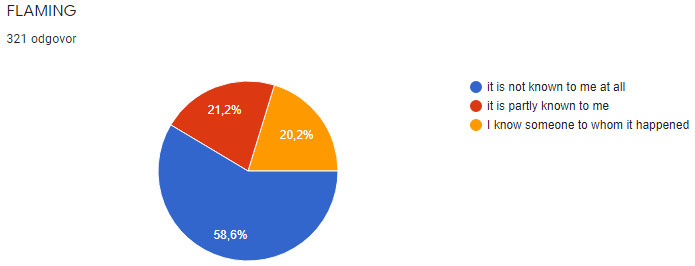














 Media stereotypes
Media stereotypes





Most students believe that social media has a more positive effect on their lives, according to almost 57% of students who completed the questionnaire. Of concern is the fact that most of them, 54% of students, perceive themselves as social media addicts.


CROATIA - II. gimnazija, Split
SLOVAKIA
ERASMUS, Questionnaire - Module 1 - Media Literacy – Summary – Slovakia – Secondary grammar school of P.J. Šafárik
We conducted the questionnaire via google forms and we got 62 answers. The age of students ranges from 14 -18 but 33,9 % of them were 18. Out of them 79% were females and 21% males. The data related to their parents education and employment showed that 48,4% of mothers acquired master´s degree, 6,5% bachelor´s degree and 45,5 finished secondary education. 9,7 % of mothers are unemployed. Their fathers acquired master´s degree – 35,5%, bachelor´s degree – 6,5% and the secondary education – 58,1%. Only 8,1% of them are unemployed.
54.2% of students spend 3-4 hours on social media sites and 19,4% of them more than 5 hours. 60% of them feel distracted by social media. The most used source of information is some kind of social network. 61,3 % of them think that social media provide us with true and reliable information. All of them think about whether the information they share on social media is accurate. 46,8% of students strongly agree that the production and spreading of misinformation is a big and current problem. 79% of them recognise themselves as fact-checkers.
64,5 % of students have talked to their parents about the Internet security. 79% of them do not have any filters like YouTube Safe Mode and Google SafeSearch or parental protection tools. 66,1% of them are familiar with the term sexting and 41,9 of them have found themselves in a situation where they have been exposed to inappropriate sexual content through social networks and applications.



